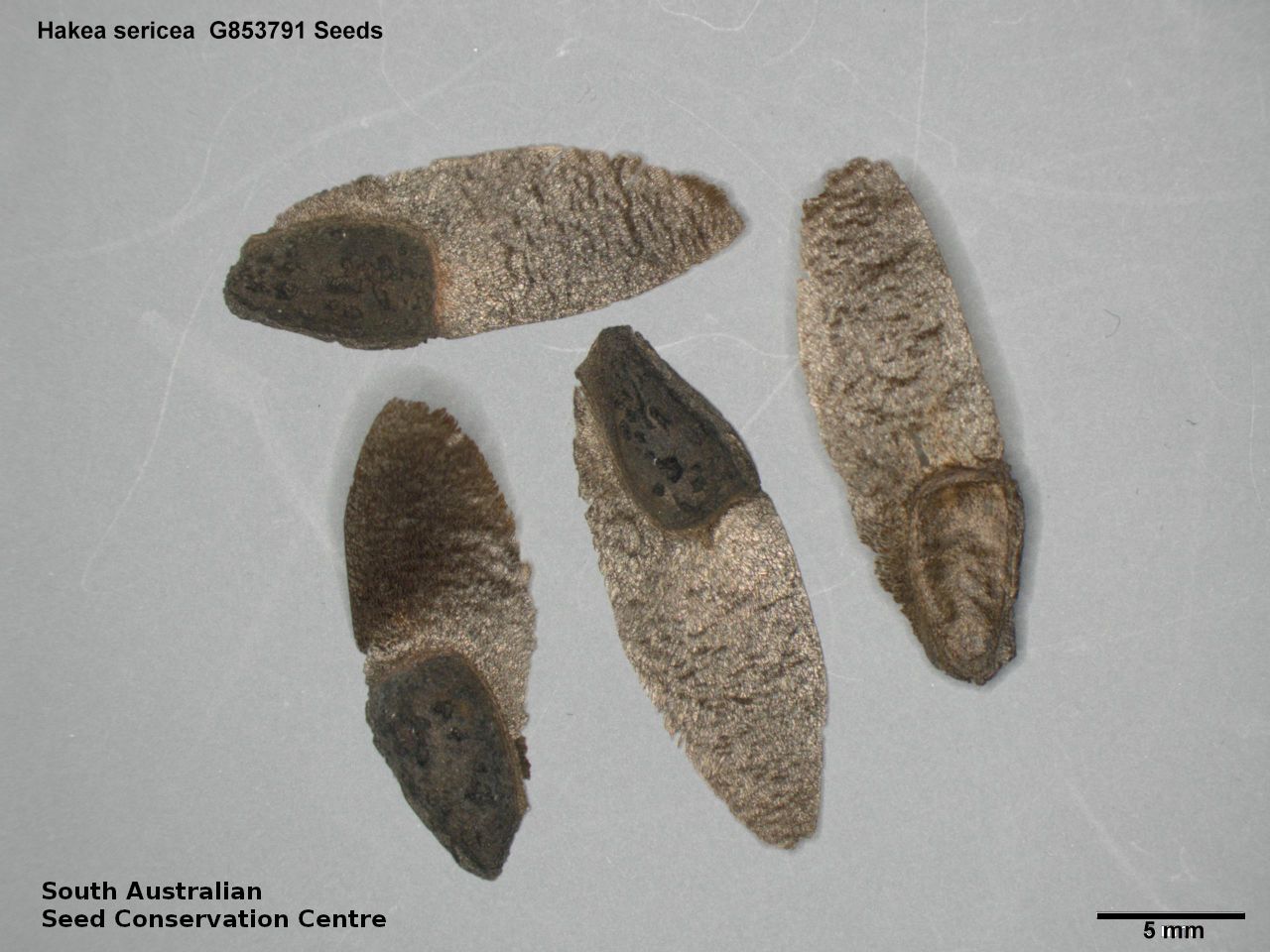









Botanical art
Common names
Silky Hakea
Etymology
Hakea named after Baron Christian Ludwig von Hake (1745-1818), a German horticulturalist and patron of botany. Sericea from the Latin 'sericeus' meaning silky; possible referring to the silky shining hairs on the young branches.
Distribution and status
Naturalised in South Australia with a few records from southern Mount Lofty Ranges and the South-east growing on roadside in dry sclerophyll forest and heaths. Native to Queensland and New South Wales. Naturalised in Victoria. Introduced in South Australia. Introduced in Victoria. Rare in Queensland. Common in New South Wales.
Herbarium regions: Southern Lofty, South Eastern
AVH map: SA distribution map (external link)
Plant description
Divaricate shrub to 4 m high with densely hairy young branches. Leaves at right angles to stem; terete, spreading, grooved below; to 72 mm long and 1.3 mm wide, glabrous with a pungent tip. Inflorescence in axillary clusters with 1�6 white flowers (pinkish in buds). Flowering between July and October. Fruits are greyish-brown woody ovoid fruit to 30 mm long and 2.2 mm wide, with a deeply wrinkled surface and a pointed beaked end. Fruit splits into two, to reveal two seeds. Seeds are dark brown to black ovoid seed to 8 mm long and 5 mm wide (19 mm long and 7 mm wide including the wing that extends down one side of seed). Seed embryo type is investing.
Seed collection and propagation
Collect seeds between January and December. Collect mature woody fruit that are hard, brown and not split. These will contain seeds. Place the woody fruit in a tray and leave to dry until it splits open. Fruits can be placed in the oven at low temperatures to achieve the same result. Place the dried fruit in a bucket and shake to dislodge the seeds from the valves. Separate the seeds from the fruit and store the seeds with a desiccant such as dried silica beads or dry rice, in an air tight container in a cool and dry place Seeds are non-dormant, viable seed should germinate readily without pre-treatment.